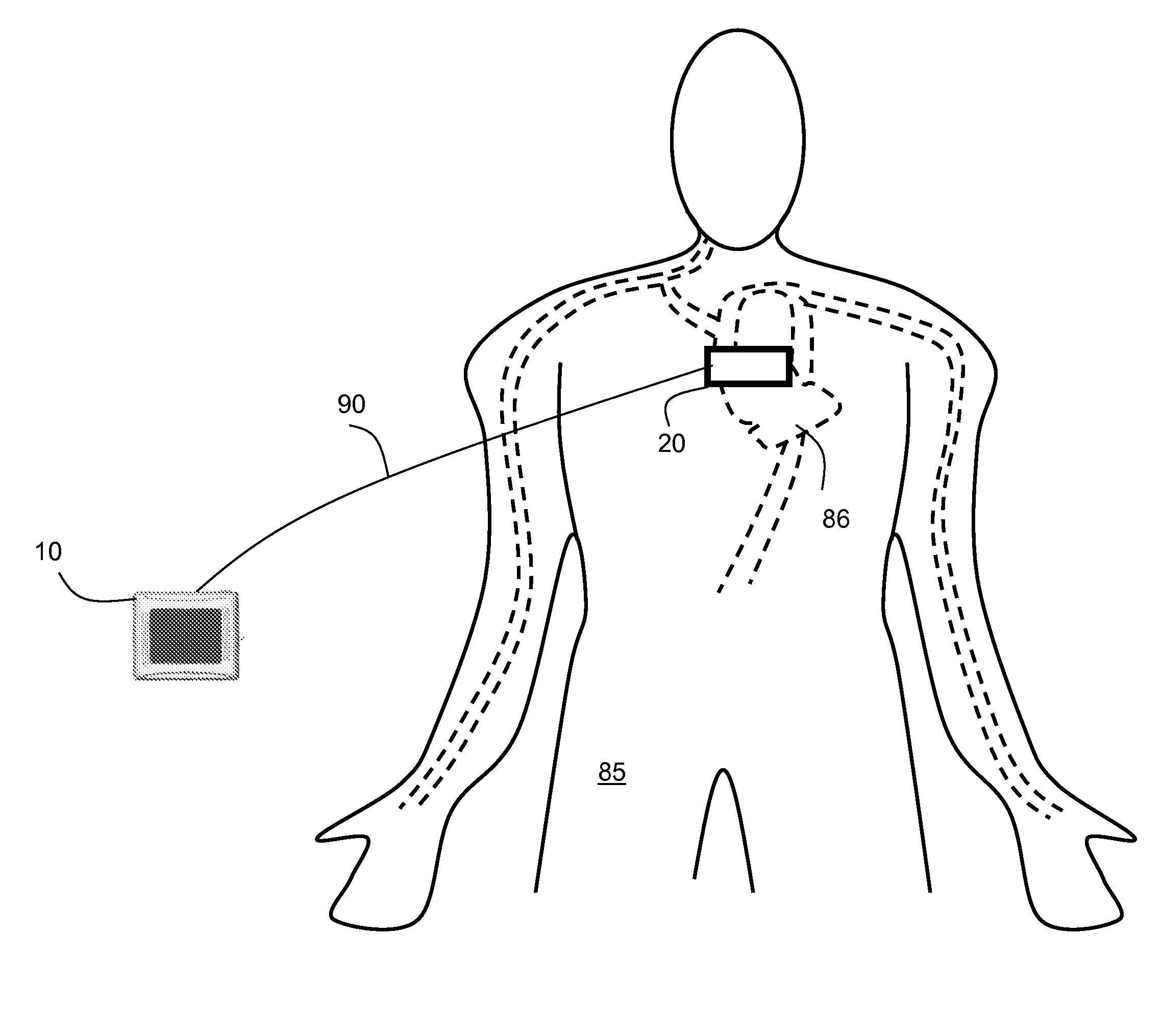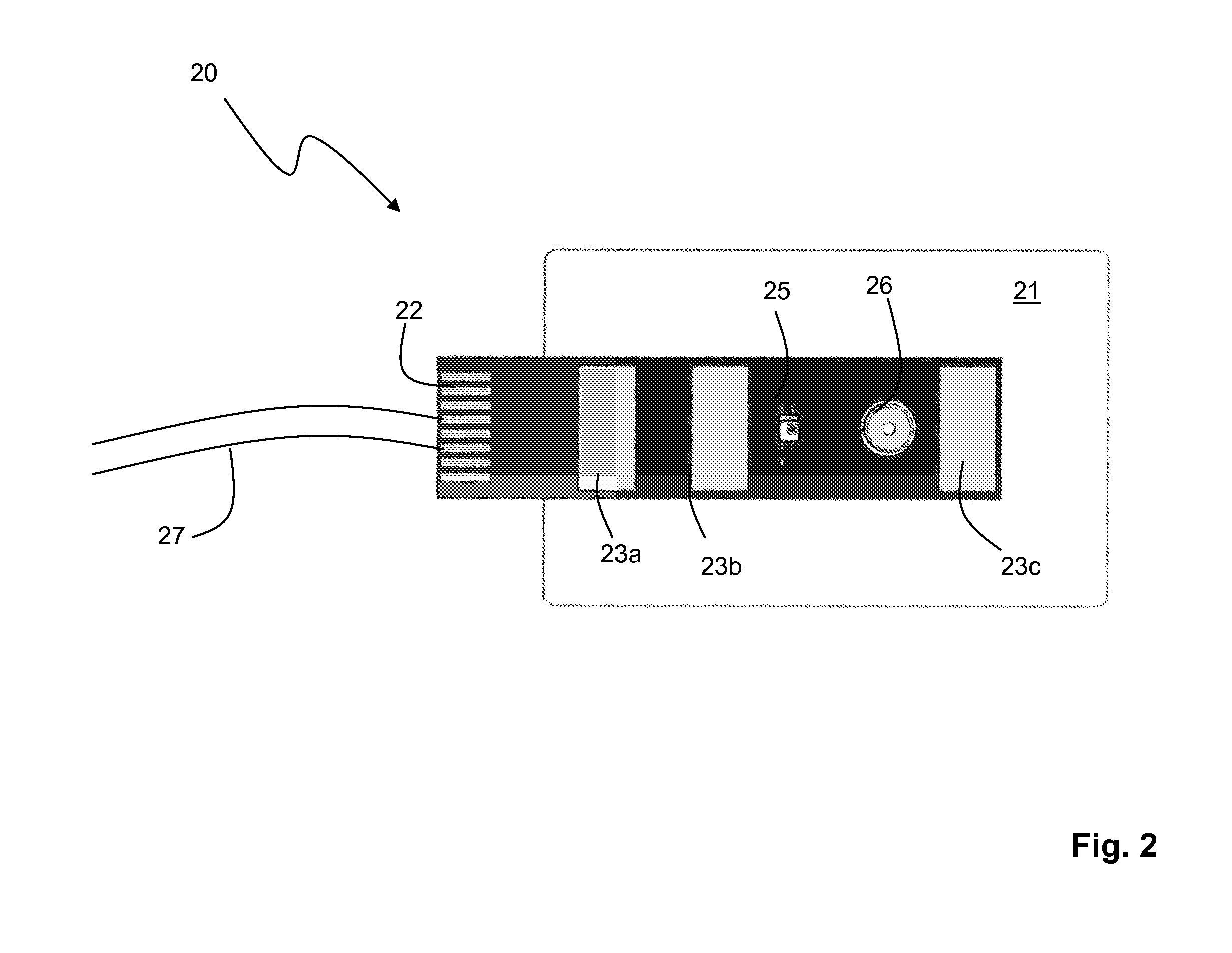Hand-held vital signs monitor
a vital signs monitor and hand-held technology, applied in the field of medical devices for monitoring vital signs, can solve the problems of complicated ptt-based blood pressure measurement, short ptt, and inability to accurately calculate the blood pressure in the ventricle, etc., to achieve simple, rapid, pain-free manner, and increase the effect of blood pressure calculation
- Summary
- Abstract
- Description
- Claims
- Application Information
AI Technical Summary
Benefits of technology
Problems solved by technology
Method used
Image
Examples
Embodiment Construction
[0031]FIGS. 1A, 1B, and 2 show a vital signs monitor 10 according to the invention that attaches though a connector 4 and coaxial cable 27 to a sensor 20 that measures systolic and diastolic blood pressure, heart rate, respiratory rate, and ECG. Using a plastic stylus 11, an operator controls the vital signs monitor 10 through a GUI (shown in FIGS. 4A and 4B) that runs on a LCD / touch panel assembly 35. In this way, the operator can easily select a variety of different measurement modes to characterize a patient. For example, using the GUI and LCD / touch panel assembly 35, the user can select modes for one-time and continuous measurements in the hospital, as well as 24-hour ambulatory measurements and measurements made during patient transport outside of the hospital.
[0032]A plastic housing 60 surrounds the monitor 10 to protect its internal components. The monitor 10 additionally includes a barcode reader 2 to optically scan patient information encoded, e.g., on a wrist-worn barcode....
PUM
 Login to View More
Login to View More Abstract
Description
Claims
Application Information
 Login to View More
Login to View More - R&D
- Intellectual Property
- Life Sciences
- Materials
- Tech Scout
- Unparalleled Data Quality
- Higher Quality Content
- 60% Fewer Hallucinations
Browse by: Latest US Patents, China's latest patents, Technical Efficacy Thesaurus, Application Domain, Technology Topic, Popular Technical Reports.
© 2025 PatSnap. All rights reserved.Legal|Privacy policy|Modern Slavery Act Transparency Statement|Sitemap|About US| Contact US: help@patsnap.com



